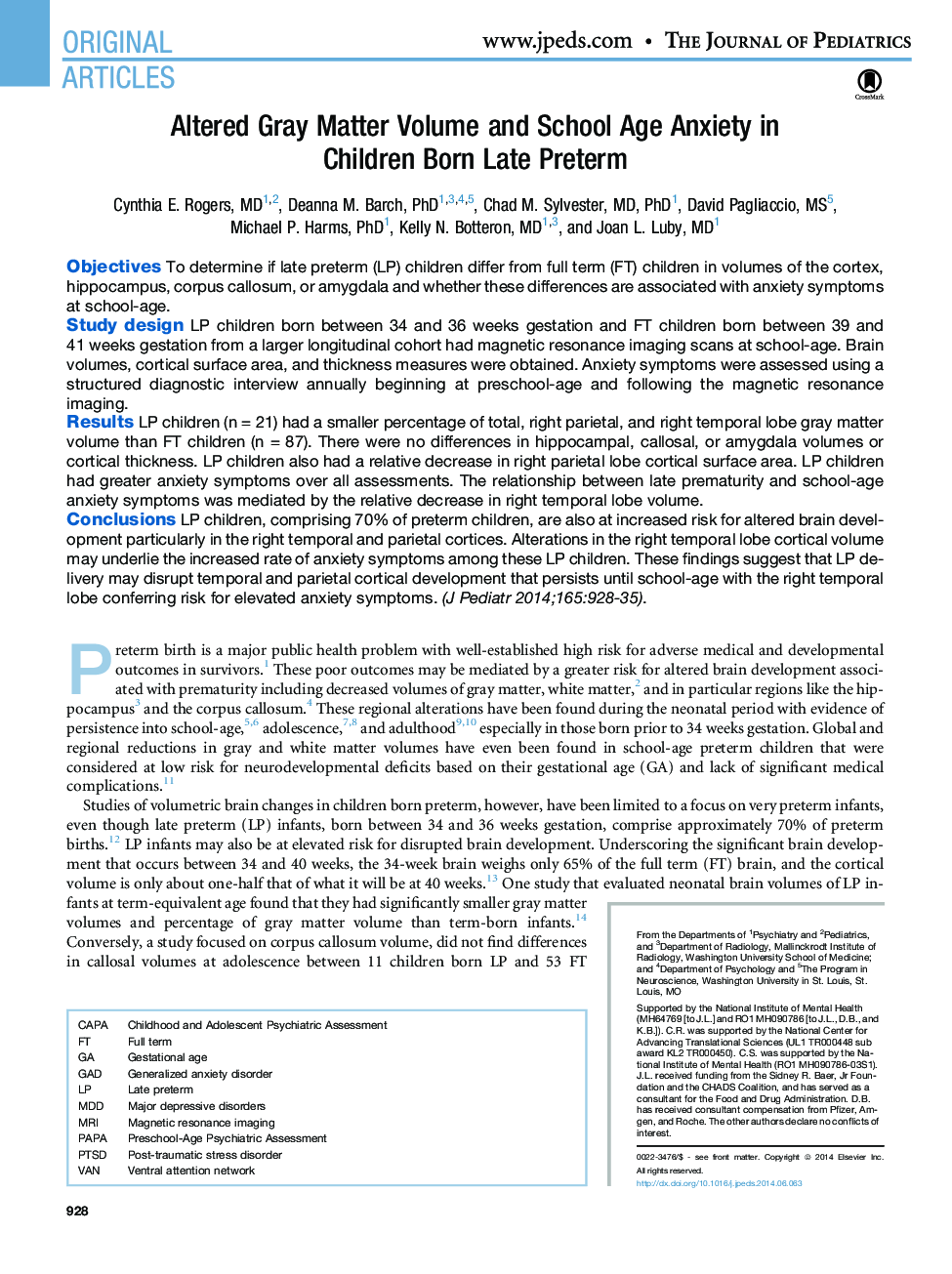| Article ID | Journal | Published Year | Pages | File Type |
|---|---|---|---|---|
| 6222037 | The Journal of Pediatrics | 2014 | 8 Pages |
ObjectivesTo determine if late preterm (LP) children differ from full term (FT) children in volumes of the cortex, hippocampus, corpus callosum, or amygdala and whether these differences are associated with anxiety symptoms at school-age.Study designLP children born between 34 and 36 weeks gestation and FT children born between 39 and 41 weeks gestation from a larger longitudinal cohort had magnetic resonance imaging scans at school-age. Brain volumes, cortical surface area, and thickness measures were obtained. Anxiety symptoms were assessed using a structured diagnostic interview annually beginning at preschool-age and following the magnetic resonance imaging.ResultsLP children (n = 21) had a smaller percentage of total, right parietal, and right temporal lobe gray matter volume than FT children (n = 87). There were no differences in hippocampal, callosal, or amygdala volumes or cortical thickness. LP children also had a relative decrease in right parietal lobe cortical surface area. LP children had greater anxiety symptoms over all assessments. The relationship between late prematurity and school-age anxiety symptoms was mediated by the relative decrease in right temporal lobe volume.ConclusionsLP children, comprising 70% of preterm children, are also at increased risk for altered brain development particularly in the right temporal and parietal cortices. Alterations in the right temporal lobe cortical volume may underlie the increased rate of anxiety symptoms among these LP children. These findings suggest that LP delivery may disrupt temporal and parietal cortical development that persists until school-age with the right temporal lobe conferring risk for elevated anxiety symptoms.
